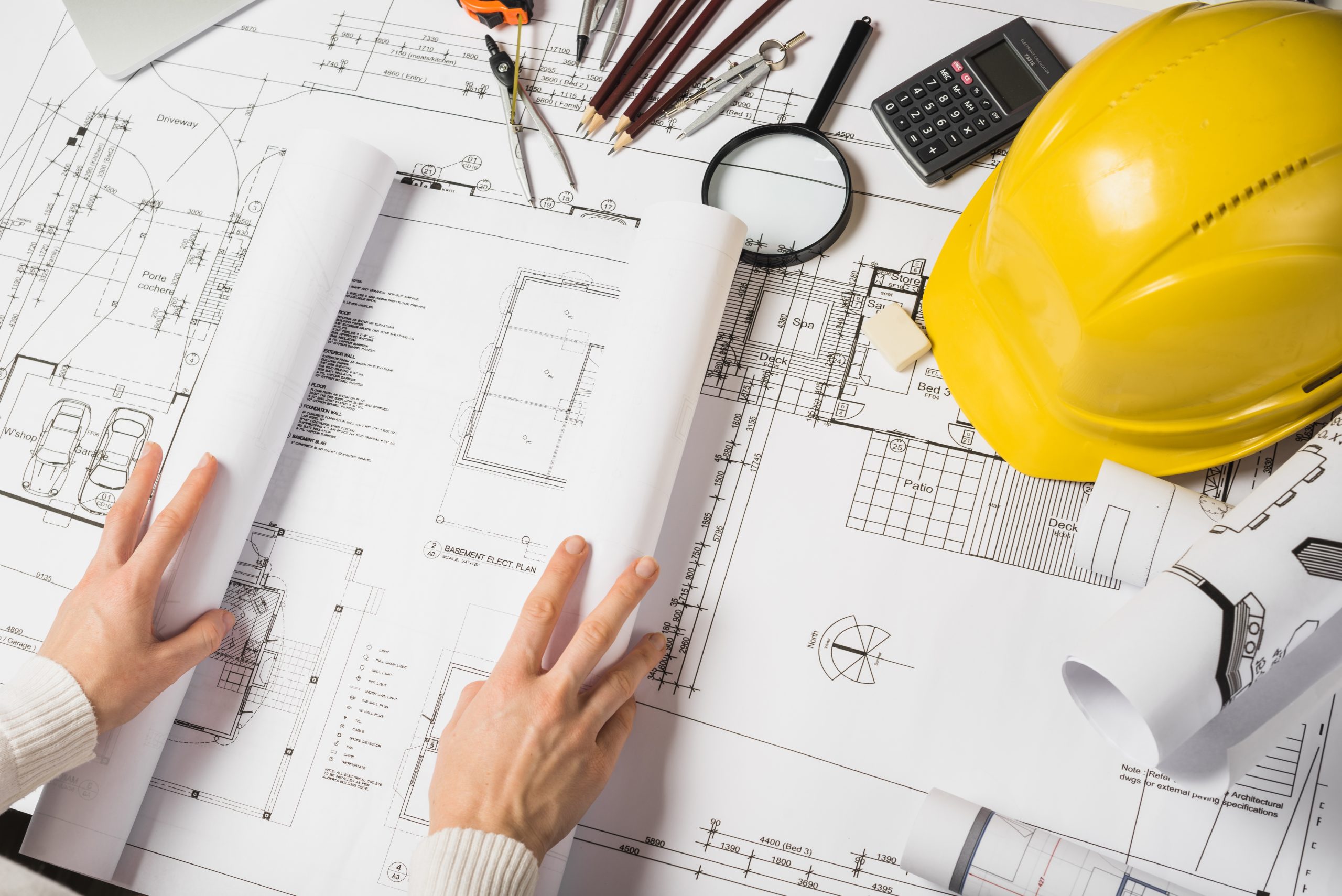Recognizing the Diverse Profession Paths Available for Aspiring Architect
As an ambitious Architect, you have a globe of profession courses waiting for you. Whether you're drawn to standard style or the nuances of lasting design, there's a specific niche that lines up with your interests.
Standard Architecture: Creating Frameworks and buildings
Conventional architecture focuses on developing buildings and frameworks that blend functionality with visual allure. As you explore this field, you'll appreciate the detailed equilibrium in between kind and function. You'll discover to draw inspiration from historic designs, incorporating elements like symmetry, products, and workmanship. Your designs can mirror cultural heritage, showcasing regional traditions while fulfilling modern-day needs.
You'll develop abilities in drafting, model-making, and website evaluation, enabling you to imagine and connect your ideas properly. Engaging with customers, you'll require to understand their vision and translate it into feasible designs.
Additionally, developing codes and sustainability techniques are necessary in your job, guaranteeing your frameworks are safe and ecologically pleasant. As you expand in your job, you'll discover chances in property, commercial, or also reconstruction tasks, each offering special challenges. Welcoming conventional design leads the way for a satisfying career that pays homage to the past while shaping the future.
Urban Preparation: Shaping Areas and Public Spaces
As a hopeful Architect, you can play a crucial role as a city planner, changing exactly how neighborhoods function and connect. By employing area engagement methods, you'll assure that residents have a voice in shaping their atmosphere. And also, integrating sustainable layout principles will certainly aid create areas that not only fulfill today's needs but additionally protect the future.
Role of Urban Planners
While several could believe of designers as the single dreamers behind buildings, metropolitan planners play a vital role in shaping the more comprehensive landscape of communities and public areas. By collaborating with different stakeholders, you'll help design parks, transportation systems, and household locations that promote social communication and accessibility. Your expertise in spatial style and community characteristics allows you to envision future growth while protecting social heritage.
Community Engagement Methods
Effective community engagement techniques are crucial for metropolitan organizers to assure that the voices of locals are listened to and valued in the preparation procedure. To cultivate purposeful discussion, you should focus on open discussion forums and workshops where area participants can share their ideas and concerns. By actively incorporating and listening responses, you'll create areas that reflect the neighborhood's demands, ultimately leading to even more successful and sustainable metropolitan settings.
Lasting Layout Principles
When creating metropolitan spaces, incorporating sustainable style principles is crucial for creating atmospheres that flourish both ecologically and socially. Take into consideration incorporating environment-friendly spaces, like parks and gardens, to improve biodiversity and enhance air quality.
Creating with water conservation in mind is also crucial-- think of rainfall yards and absorptive surfaces to manage stormwater. Including area members throughout the preparation procedure guarantees that the rooms you develop satisfy their requirements and encourage social interaction. By embracing these principles, you'll add to dynamic, lasting urban landscapes that benefit every person.

Landscape Architecture: Creating Sustainable Outside Settings
As you check out landscape design, you'll discover essential layout principles that produce functional and attractive outdoor areas. Lasting methods play an essential role in ensuring these settings grow while reducing ecological effect. And also, you'll find a range of career chances that enable you to make an actual distinction in how people interact with nature.
Layout Principles in Landscape
Understanding layout concepts in landscape style is important for producing lasting exterior atmospheres that balance with nature. You'll require to ponder aspects like balance, proportion, and scale to ensure your styles really feel cohesive and inviting. Incorporating indigenous plants not just boosts biodiversity yet likewise minimizes water usage, making your landscape durable. Consider the flow of room and how individuals connect with it; pathways and seating areas should invite exploration and leisure. In addition, pay attention to seasonal changes, developing with products that match the surroundings year-round (Architect). By prioritizing sustainability and aesthetics, you can create outside rooms that enrich the neighborhood and promote wellness. Welcoming these concepts will certainly establish a strong structure for your job in landscape design.
Sustainable Practices Overview
Sustainable methods in landscape style not just concentrate on aesthetics however likewise prioritize environmental health and wellness and resource preservation. By integrating indigenous plants, you enhance biodiversity and decrease the demand for chemical plant foods and pesticides. Executing effective irrigation systems helps conserve water and lessens overflow, protecting nearby environments. You can create rooms that advertise soil wellness, such as exercising and making use of organic materials permaculture principles. Additionally, integrating green facilities, like rain gardens and permeable pavements, aids in stormwater administration and minimizes city warmth. When you develop outside environments with sustainability in mind, you add to a much healthier world and give spaces that cultivate area link. Inevitably, these techniques ensure your styles benefit both people and the setting for several years ahead.
Profession Opportunities Expedition
With a strong foundation in lasting practices, landscape design uses a selection of about his career courses that enable you to make a meaningful impact on the setting. You could work as a landscape developer, producing cosmetically pleasing and practical outside rooms, or concentrate on environmental restoration, aiding to restore damaged ecosystems. Urban planners frequently team up with landscape engineers to develop green areas in urban settings, boosting city livability. If you're enthusiastic about education and learning, think about becoming a landscape style educator, inspiring future generations. Additionally, you could deal with nonprofits concentrated on environmental sustainability or take part in research to introduce brand-new methods. Each path not only forms lovely environments but additionally cultivates a healthier earth for future generations.
Sustainable Style: Concentrating On Eco-Friendly Practices
As you discover your profession in design, embracing green methods can establish you apart in a competitive area. Lasting layout concentrates on producing buildings that decrease environmental impact while improving occupant well-being. By including renewable products, energy-efficient systems, and sustainable building strategies, you'll contribute to a greener future.
Beginning by obtaining understanding of environment-friendly qualifications like LEED or BREEAM, which can reinforce your qualifications. Consider exactly how all-natural light, ventilation, and thermal effectiveness can enhance style. Team up with engineers and ecological professionals to introduce remedies that lower waste and save sources.
Don't fail to remember the read the article value of community involvement-- appealing regional stakeholders can motivate layouts that balance with the atmosphere. As customers increasingly prioritize sustainability, your competence in environment-friendly techniques will certainly not just bring in tasks but additionally meet your enthusiasm for liable design. Welcome this crucial facet of the career, and view your profession prosper.
Historical Preservation: Protecting and Bring Back Cultural Heritage
While you begin on your architectural journey, consider the important duty of historic preservation in maintaining our cultural heritage. This area focuses on the defense and restoration of considerable structures, websites, and frameworks that inform the tales of our past. By taking part in historical conservation, you'll help guard the building heritage that forms area identification.
As a historic conservation Architect, you'll evaluate historical importance and evaluate the problem of frameworks. You'll work closely with preservationists and historians to guarantee genuine restoration methods are used. This profession path permits you to blend creative thinking with research, allowing you to create options that value original products and craftsmanship.
Your job not just adds to sustainability by reusing existing buildings but likewise cultivates a feeling of pride within areas. Welcoming this course will assist you end up being a guardian of history, preserving the tales and appearances that enhance our lives.
Interior Style: Enhancing Indoor Spaces
Historical preservation and interior design both share a dedication to enhancing the developed atmosphere, however they concentrate on different facets. While historical conservation highlights keeping a structure's social and historical value, interior style zeroes in on enhancing interior rooms for performance and appearances.
As an ambitious Architect, you'll discover that indoor style allows you to blend creativity with technological abilities. You'll create rooms that not just look good but likewise promote convenience and efficiency. This field involves recognizing exactly how light, color, and products communicate within an area, influencing mood and functionality.
You'll work with different tasks, from domestic homes to industrial workplaces, guaranteeing that each setting fulfills the needs of its occupants. By prioritizing customer experience, you can transform interiors into practical and inspiring areas, making a substantial impact on exactly how individuals interact with their surroundings. Welcome the chance to boost interior atmospheres and shape the way people function and live.
Industrial Layout: Combining Functionality With Aesthetics
Commercial design plays an essential duty in creating products that effortlessly blend visual appeals with capability, making sure that what you utilize everyday is not just aesthetically attractive however additionally functional. As an aspiring Architect, you could immerse on your own in this field, focusing on making every little thing from furniture to customer electronics. Your work entails recognizing user needs, products, and manufacturing processes, enabling you to create ingenious remedies that improve everyday experiences.
In industrial design, you'll typically collaborate with designers, marketers, and manufacturers, ensuring that your designs are not only attractive but also possible. You'll discover to balance kind and feature, focusing on use without compromising design. By sharpening your skills in sketching, 3D modeling, and prototyping, you'll be well-appointed to bring your concepts to life. This career path uses a vibrant atmosphere where creative thinking satisfies functionality, making it a rewarding option for engineers interested in shaping the products of tomorrow.
Regularly Asked Questions
What Educational Qualifications Do I Need to Come To Be an Architect?
To come to be an engineer, you'll require a specialist level in style, commonly a Bachelor's or Master's. Additionally, you'll need to finish an internship informative post and pass the Architect Enrollment Evaluation to exercise legally.
Are There Accreditation Demands for Different Building Profession Paths?
Yes, there're qualification needs for numerous architectural courses. Architect. You'll require to pass tests, total teaching fellowships, and sometimes seek specialized training, depending upon your chosen emphasis, like landscape style, metropolitan style, or historical conservation
What Software Abilities Are Vital for Designers Today?

Exactly How Can I Gain Practical Experience While Researching Style?
You can acquire practical experience by interning at building firms, taking part in design competitors, offering for neighborhood projects, or collaborating with classmates on real-world projects. These opportunities enhance your abilities and construct useful connections in the industry.
What Job Opportunities Exist Outdoors Conventional Design Firms?
You can check out various task possibilities outside typical style firms, like urban preparation, indoor layout, landscape design, building and construction monitoring, property advancement, and even duties in sustainability consulting. Each deals one-of-a-kind challenges and benefits.
Whether you're drawn to traditional style or the subtleties of sustainable style, there's a niche that straightens with your passions.When making metropolitan areas, including lasting design concepts is vital for producing atmospheres that thrive both ecologically and socially.As you check out landscape style, you'll uncover vital layout principles that develop practical and beautiful outside rooms.Understanding style principles in landscape architecture is important for creating lasting outside settings that integrate with nature.In commercial style, you'll commonly collaborate with online marketers, producers, and designers, ensuring that your styles are not only stunning but also possible.
Comments on “Architect Advice on Optimizing Small Urban Spaces”